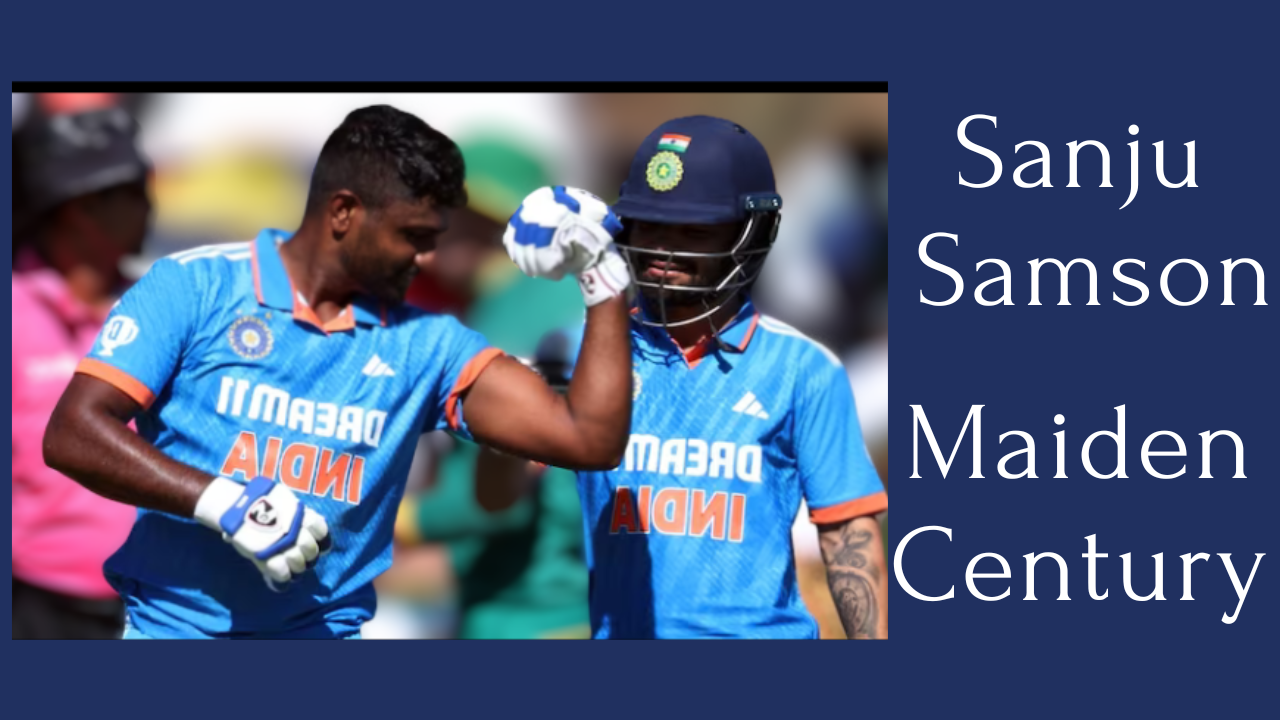After making his debut for his country in July 2015, Sanju Samson, a Kerala batsman, had to wait 8 years and 4 months to score his first century at the top level. But Samson’s first One Day International (ODI) century could not have come at a better time on Thursday, December 21, in Perth during the pivotal game of the series against South Africa.
Sanju Samson demonstrated that he was deserving of the selectors’ confidence by playing with instincts, navigating Perth’s slow pitch and adjusting his style of play to suit the situation. Samson, who made his ODI debut in July 2021, faced 110 deliveries to complete his first ODI century in the competition’s 42nd over at Bolland Park on Thursday.
Samson’s previous career high of 86 runs was also achieved at home in 2022 against South Africa. Though he was doing well in the 50-over format, his inconsistent performance—15 matches with three-figure scores—often worked against him in selection decisions. However, Samson assumed accountability in the series’ pivotal game, leading a cool innings to break the drought.
Samson, who is well-known for his three IPL centuries, reached the 100-run barrier with just six fours and two sixes while wickets were falling at the other end.
Many of Sanju Samson’s admirers, especially former cricket players, were disappointed by his incapacity to seize opportunities at the highest level. Due to a major setback, the wicketkeeper-batsman, who consistently displays his skills in the Indian Premier League, was unable to play in the ODI World Cup on home soil. Samson was left out of the squad for the home World Cup at the beginning of the year, despite his strong performance in the 50-over format.
He did, however, get another opportunity when he was picked for the three-match ODI series in South Africa, which included veteran players like Rohit Sharma and Virat Kohli. In the first ODI, which India won by an exciting 8-wicket margin thanks to a strong bowling performance, Samson was not given the opportunity to bat. He had to work hard to have an impact, though, as India lost by eight wickets in Centurion on Tuesday in the second ODI, scoring just 12 runs off 25 deliveries.
In the fifth over, Sanju Samson entered the bat at number three. After opening batsman Rajat Patidar, an Indian rookie, was out at 22 runs, Samson joined Sai Sudarshan in the middle. In the eighth over, Sudarshan scored two half-centuries in a row, but Sudarshan Nandre ended up getting the better of him.
After a dismal batting display in the second ODI, India was put under duress, but Samson and KL Rahul helped India get out of danger. Before Rahul was dismissed at 21 runs, the two batters had a partnership of 52 runs for the third wicket.
After that, Samson and Tilak Varma had a solid 116-run partnership during which Varma scored his first-ever half-century in one-day internationals. Samson started the big score early in their collaboration, and Varma took his time settling in. Samson did a fantastic job of acting like a seasoned player, keeping Varma calm while both players kept up a consistent scoring pace.
In a hard match, India was looking for a competitive total, and when they were dismissed for 108, it was because they attempted to hurry.
Sanju’s Batting Style-
Sanju is a terrific batter with excellent batting technique and wicket-keeping abilities. He is also naturally aggressive. He has strong wrists, deft hands, and superb timing. He also maintains a loose posture and holds the bat high on the handle. Though he is frequently confined between cover and fine-leg, he is considered a superb ball timer.
He rarely travels down the track to play shots because he prefers stability on the crease. He can play straight; he likes to hit above the bowler’s head with minimal head movement. He can also play aerial strokes without raising his head.
He only moves his feet when it’s absolutely necessary to get to the ball. If not, he stays still and keeps his equilibrium, which enables him to shift his weight and timing his shots precisely.
Strong stroke-makers like AB de Villiers and Rohit Sharma, who can put the ball with little effort, have been likened to him in terms of power. His batting approach in Twenty20 cricket has been described as “fearless.” Rotating the strike is still a weakness in his technique, though.A ton to savour for #SanjuSamson! 🙌
— Star Sports (@StarSportsIndia) December 21, 2023
A 💯 that's testament to his talent & promise!
What a knock by the #TeamIndia #3!
Will he power 🇮🇳 to a massive total?
Tune-in to the 3rd #SAvIND ODI
LIVE NOW | Star Sports Network#Cricket pic.twitter.com/oAUtrVCuJX
